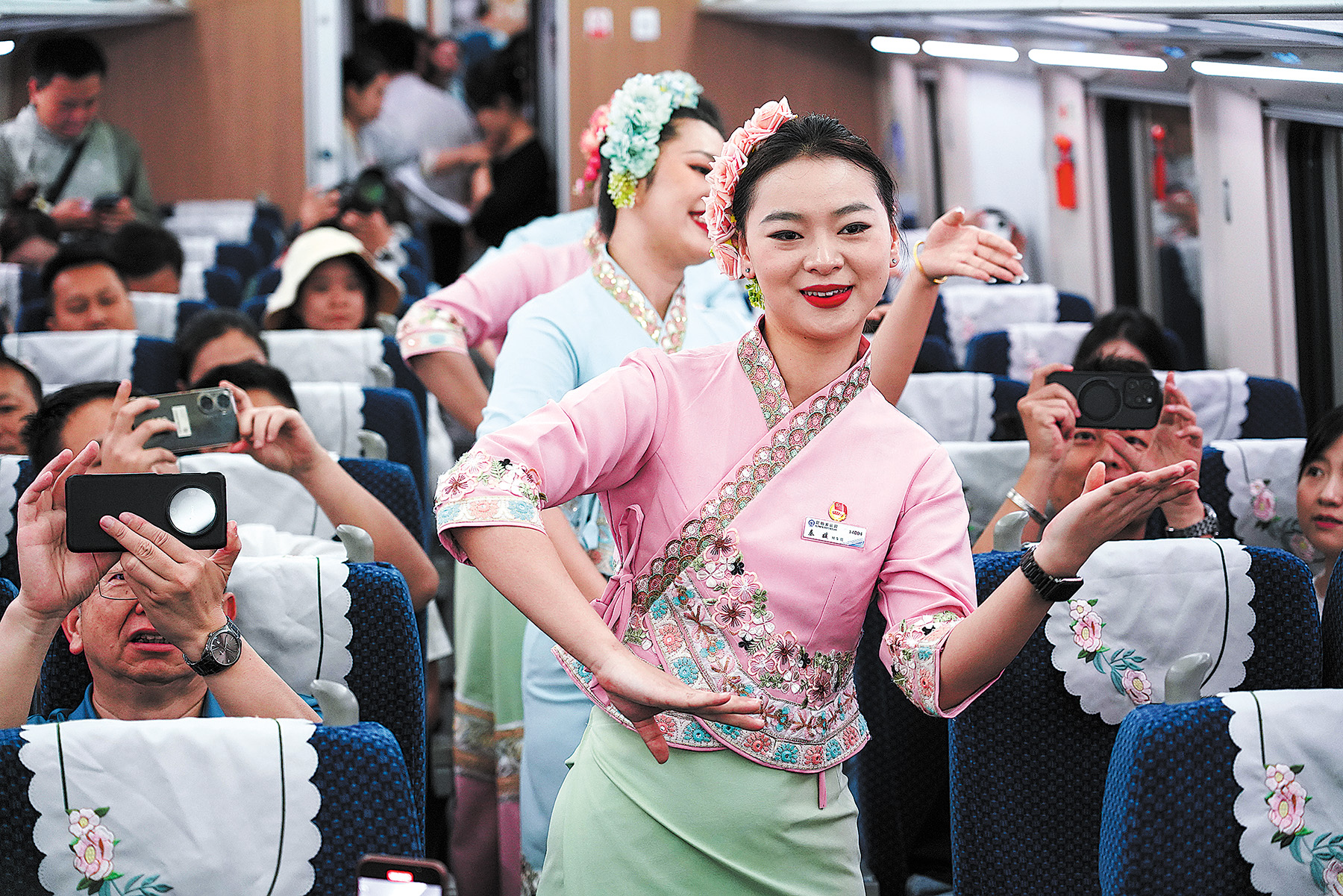A year in, China-Laos cross-border passenger rail service brings countries, people together

Ayear or so ago, Phachoumphon Thongmy could rightly complain that something was coming between him and his wife. The obstacle was not a typical domestic difference, however, but rather a mighty mountain range.
Thongmy lives in Vientiane, the capital of Laos, while his wife, who is Chinese, and their son live in the Xishuangbanna Dai autonomous prefecture in Southwest China’s Yunnan province. In the middle stand rugged mountains that, until recently, could be negotiated only by 1,600 kilometers of winding roads.
Each time the two got together, one of them faced an arduous journey that could easily take two days.
But that changed last year, with the opening of a passenger rail link connecting Vientiane and Kunming, the capital of Yunnan, which transformed the couple’s lives.
“Thanks to the railway, our family can finally be together,” Thongmy said recently. “It used to take me two days to get from Laos to China to meet my wife and son. Now, by train, it takes just five hours.”
Since the rail service opened, he has returned home once a month, and he plans to start a business trading between China and Laos.
The China-Laos Railway began operations in December 2021, with cross-border passenger service starting on April 13, 2023.
Since the inaugural high-speed train departed from Kunming South Railway Station a year ago, similar passenger trains, all of which are painted a distinctive green, have traveled the route hundreds of times, covering the 1,035 kilometers between Vientiane and Kunming.
Yang Xueqin, a police officer at the Mohan checkpoint, said, “When it comes to the weekend and holidays, people from cities in Laos, such as Vientiane and Luang Prabang, take the train to cities in Yunnan, including Jinghong and Kunming.
Over the past year, a total of 6,200 inbound and outbound trains have used the rail line, transporting more than 50 million metric tons of goods and carrying more than 183,000 passengers from 87 countries and regions, according to the Mohan checkpoint.
A business owner surnamed Wu, who imports iron ore from Laos, said it is 30 percent cheaper to transport the commodity by rail rather than road.
Over the past year, the international service has improved operations, saving time and increasing seat capacity. It used to take 90 minutes to clear customs but now takes around 50 minutes, and the number of seats per train has been increased from 250 to 350. The average number of passengers per day has surged from 300 to about 700.
Zhang Hao, an immigration officer at the Mohan checkpoint, said that starting on April 13, an additional pair of international passenger trains now run from Xishuangbanna in Yunnan to Luang Prabang in Laos.
Before the rail link, landlocked Laos had long struggled with expensive transportation that limited the country’s trade and development.
The China-Laos Railway does far more than merely connecting the two countries, according to Chindavong Xaiyasin, counselor of education and culture at the Laos embassy in China. It also fulfills Laos’ strategy to transform the country from landlocked to landlinked, he said.
Ever since Laos became independent in the 1960s, a railway network has been a demand of the people. In 2015, their calls were heeded when the leaders of China and Laos decided to build the railway.
“With the railway, the mountain from Kunming to Vientiane is no longer high, and the road no longer long,” Chinese President Xi Jinping said in December 2021 during the rail line’s opening ceremony. He expressed the hope that the railway would become “a golden line for the benefit of the people of both countries”.
At 12:37 am on March 18, a special tourism train left Beijing with more than 400 passengers onboard. The cross-border tour connects China’s domestic railway and international cross-border railway, traveling from North China to Southeast Asia.
Going to China by train has also become popular among Southeast Asian tourists.
Yan Xiangha, a tour guide with Yunnan International Travel Service Agency, said, “In fact, the railway is so popular that there’s a shortage of tour guides who speak Thai.”
Trips to China for Thai tourists are fully booked through October.
“It has become a critical intermediate point connecting the world,” said Xaiyasin, from the Laos embassy.
Contact the writers at houchenchen@chinadaily.com.cn


